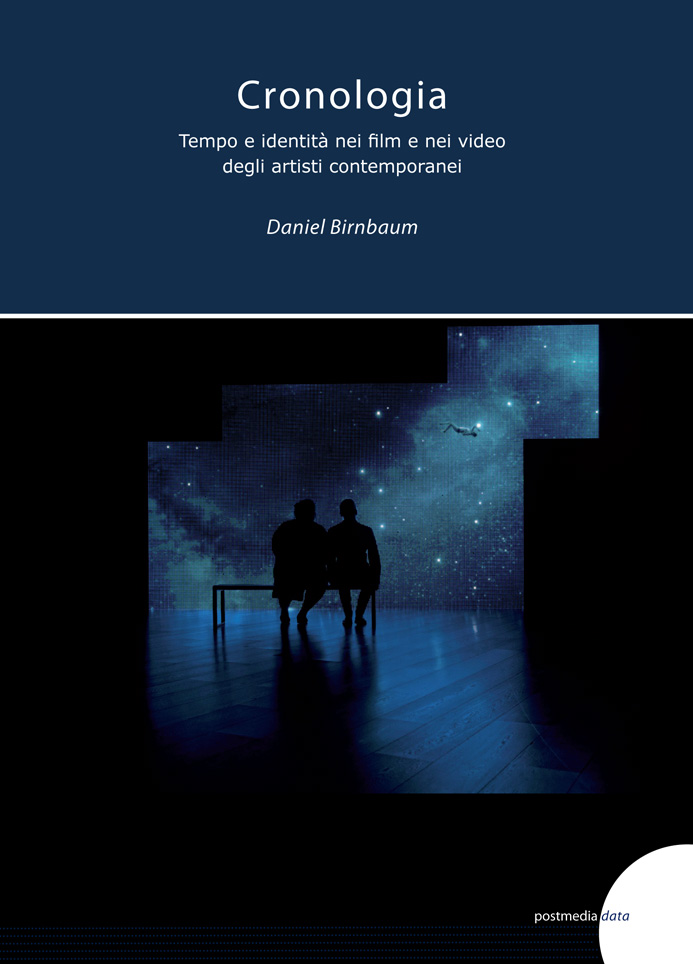
|
Giuseppe Santonocito / Domus / luglio-agosto 2008
It’s not easy to take art as a starting point to write about philosophy. It’s even harder to save an art text from the claim that it is a criticism of art or, at the other extreme, a move towards a philosophy of art. With Cronologia, Daniel Birnbaum has succeeded in the task of composing a “treatise” on contemporary aesthetics, a fine essay that occupies the blind spot where philosophical and artistic thought meet. The CV of the newly appointed curator of the 53rd International Art Exhibition in Venice has, after all, everything it takes to give us reading experiences of this kind.
Birnbaum has a philosophical background, having worked on and translated texts by Husserl and Heidegger. When he was little more than 30 years old he became Rector of the Staedelschule in Frankfurt (2001) and director of the Portikus Gallery. In 2003 he cocurated the 50th Venice Biennial and, in 2005, the 1st Moscow Biennial. As well as numerous other contributions to the art world, he regularly publishes articles on contemporary art in Artforum, Parkett and Frieze.
So art thinks, as Derrida said. Guattari and Deleuze said the same when they claimed that “phenomenology needs art”. If, when faced with fundamental problems, we can no longer rely on the great narratives, then clearly the only way out leads to a search for new lexicons, side views from which to gain different vantage points. The art route is one of these vantage points, and leading contemporary philosophers have often turned to it in an attempt to get to the obscure heart of phenomena. The cornerstone of Birnbaum’s philosophical framework in Cronologia is the acknowledgement that art has a thought, intended as a subjective genitive, i.e. an art that becomes deferred thought and questions itself on the ultimate issues.
Examining the works of central figures on today’s video-art scene (Stan Douglas, Eija-Liisa Athila, Doug Aitken, Philippe Parreno, Tobias Rehberger, Paul Chan and many more), Birnbaum’s book asks crucial questions about time and identity, the great philosophical issues.
Can we still speak of time as a uniform dimension, as the flow of an awareness that unites the present, what we remember from the past, and what we are reaching out for in the future?
Or, in light of new forms of perception, bound to the increasingly complex temporal strata produced by technology, must we reconsider the paradigms of time and subjectivity, and ask ourselves, like Deleuze, whether we are on the brink of new existential formulae?
In this sense, the role of video images, which present the ways things appear of another time, is an analogon of the phenomenological approach, because it allows “the dialectic of humankind and its global meaning” [p.78] to show through, while at the same time wondering whether the subject has disappeared and who, or what, will take its place. The artists examined by Birnbaum provide different answers to this question and they fall into two categories. Some, like Pierre Huyghe, Tacita Dean and Stan Douglas, portray the grief of the broken subject, developing melancholic twistings and turnings. Others, however, including Doug Aitken and Philippe Parreno, embrace the challenge of the new time. Their aim is not “to discover what we are, but to reject what we are”; the meaning of their images on the screen is linked to the perception of a new course of time and the intuition of “life-forms that have yet to arrive” [p. 82].
These images of time no longer correspond to the chronos, the subject’s inner time, but as in the case of Paul Chan, to whom Birnbaum devotes the appendix of his essay, to an extrinsic time, the kairos that leads to a totally different concept of time perception. Here, says Birnbaum, you experience a threshold, a messianic time that “contracts and moves towards its end” (Agamben). It is a time that “implodes” in the finite temporality of an eternal return.
Giuseppe Santonocito Philosopher
|